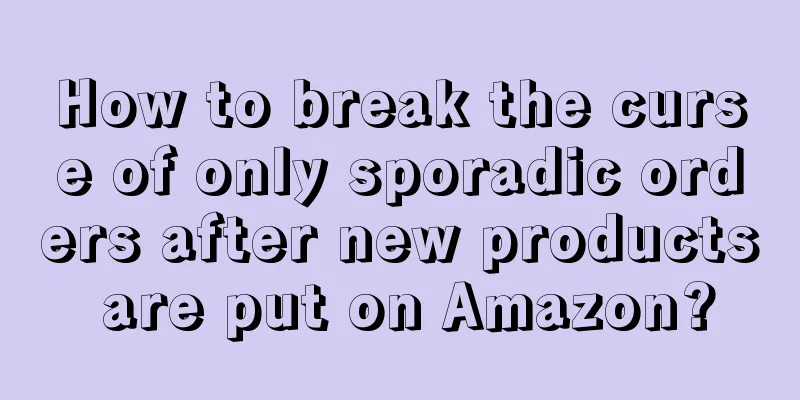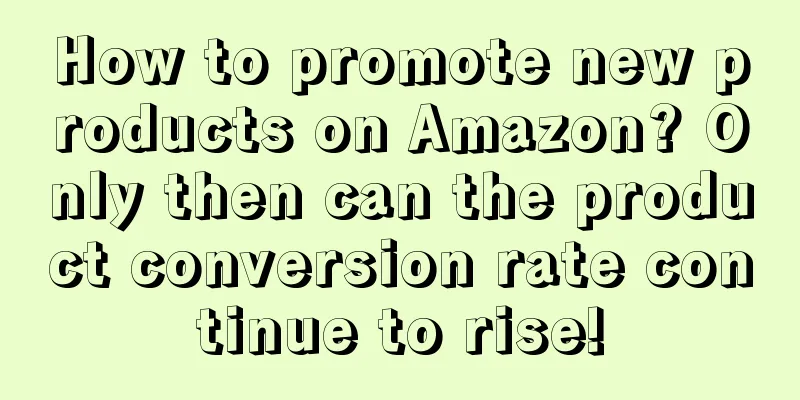Some sellers asked that new products have been put on the shelves, but they basically only receive one or two orders every day, and they don’t know what to do next.
I think similar experiences are common for new Amazon sellers.
When a new product is launched, I optimize the listing from my original perspective, and compare it with competing products to set my own price to maintain the relative advantage of the price. I even run a little advertising. I feel that I have done all the efforts I can, but the sales are not satisfactory. Either there are one or two orders a day, or even worse, there may be only one order occasionally. What is wrong with such operation?
In fact, for most products, the sales ceiling will not be just one or two orders a day. If we observe the Best Sellers in the category, the sales of most products and their measurable profits are enough to make us envious and hateful. But the most difficult thing is that sales seem to always only happen to other sellers, just like the "other people's children" that we often talk about and envy.
In order to break this deadlock, as a new seller, you must adjust your mindset and thinking direction.
Once a product is selected, we can be sure that there must be market capacity for this product. The reason why there are no orders is often due to low traffic and conversion rate. Therefore, after the new products are launched, the core of the operation revolves around these two aspects.
1. How to solve the problem of low traffic?
There are three types of Amazon traffic: natural traffic, advertising traffic, and event traffic.
In terms of natural traffic, sellers need to optimize their listings, especially by accurately selecting product categories and making good use of keywords in titles. The category selection determines the matching weight of the listing, and in terms of keywords, it is especially important to use precise keywords and long-tail keywords in combination. Accurate keywords can enable our listings to cover accurate and high-conversion traffic. For new products, long-tail keywords have special significance because of their precise target customer base and low competition. Sellers must make good use of them. Since the number of characters in the title is limited, for keywords that cannot be filled in the title, we can also fill them in the Search Terms and the five-line features and product descriptions. As long as they are used appropriately, repeating the keywords several times will do no harm.
In terms of advertising traffic, after new products are launched, from the perspective of quickly promoting the creation of listings, it is best to start in-site advertising as soon as possible, regardless of whether there are reviews or not. When setting up in-site advertising, it is recommended to enable automatic advertising first, which can not only collect keyword libraries during advertising operation, but also cover more traffic entrances. Of course, if you are familiar enough with the product and consumer behavior, you can also enable manual advertising at the same time. At this stage, sellers’ goal should be orders, and they should not over-interpret the high or low ACOS of the advertisement.
(Of course, some sellers do have concerns. Having said that, the advertising conversion is not cost-effective, which is painful. My suggestion is that for the first stage of product creation advertising, we should regard it as an investment rather than a simple expenditure. If the future is promising, temporary losses are acceptable.)
In terms of event traffic, if there is a corresponding investment manager, you can strive for BD opportunities from the investment manager. If your listing has a certain sales volume, you can report LD, or you can participate to introduce more traffic to your listing.
There is also Coupon. On Amazon, coupons also have their own independent traffic entrance, so sellers may as well set coupons for listings so as not to miss the coupon traffic entrance.
2. How to solve the conversion rate problem?
With traffic, the conversion rate will be meaningful. In order to achieve a higher conversion rate, we might as well start from the following two aspects:
1. Listing optimization: In the previous article, I said that we should use keywords well to obtain more natural traffic, but if we want to convert traffic into orders, we must pay attention to the texture of the pictures (especially the main pictures), the beauty of the titles, as well as the five elements characteristics and the grand pattern of the product description. As for the details of Listing optimization, I have already given a very detailed explanation in the book "Amazon Cross-border E-commerce Operation Guide", so I will not repeat it here. But one thing that needs to be emphasized is that competitors are the best teachers. If you really don’t know how to write a Listing, you might as well take a look at the listing details and details of those high-quality sellers.
2. Advertising conversion rate: Advertising conversion rate starts with the exposure and traffic brought by the advertisement. For an advertising plan, if you want to get more exposure and traffic, whether the category and keywords of the listing are accurate plays a very important role. If the listing is optimized OK, then the bidding of the advertisement will determine the display position of the advertisement to a certain extent. In order to get a better and more advanced display position, the advertising bidding should be appropriately higher. From the perspective of improving advertising conversion rates, if possible, adding a few reviews and QA to the listing, coupled with competitive pricing, will definitely improve the conversion rate.
If you can do all of the above, a listing will basically not stagnate at one or two orders. Of course, at this time, maybe you calculate that the profit is not high or even no profit, but don't worry, because with more orders and higher rankings, the traffic will naturally increase, the unit price of the product can also be gradually increased, and the profit will come out step by step.

